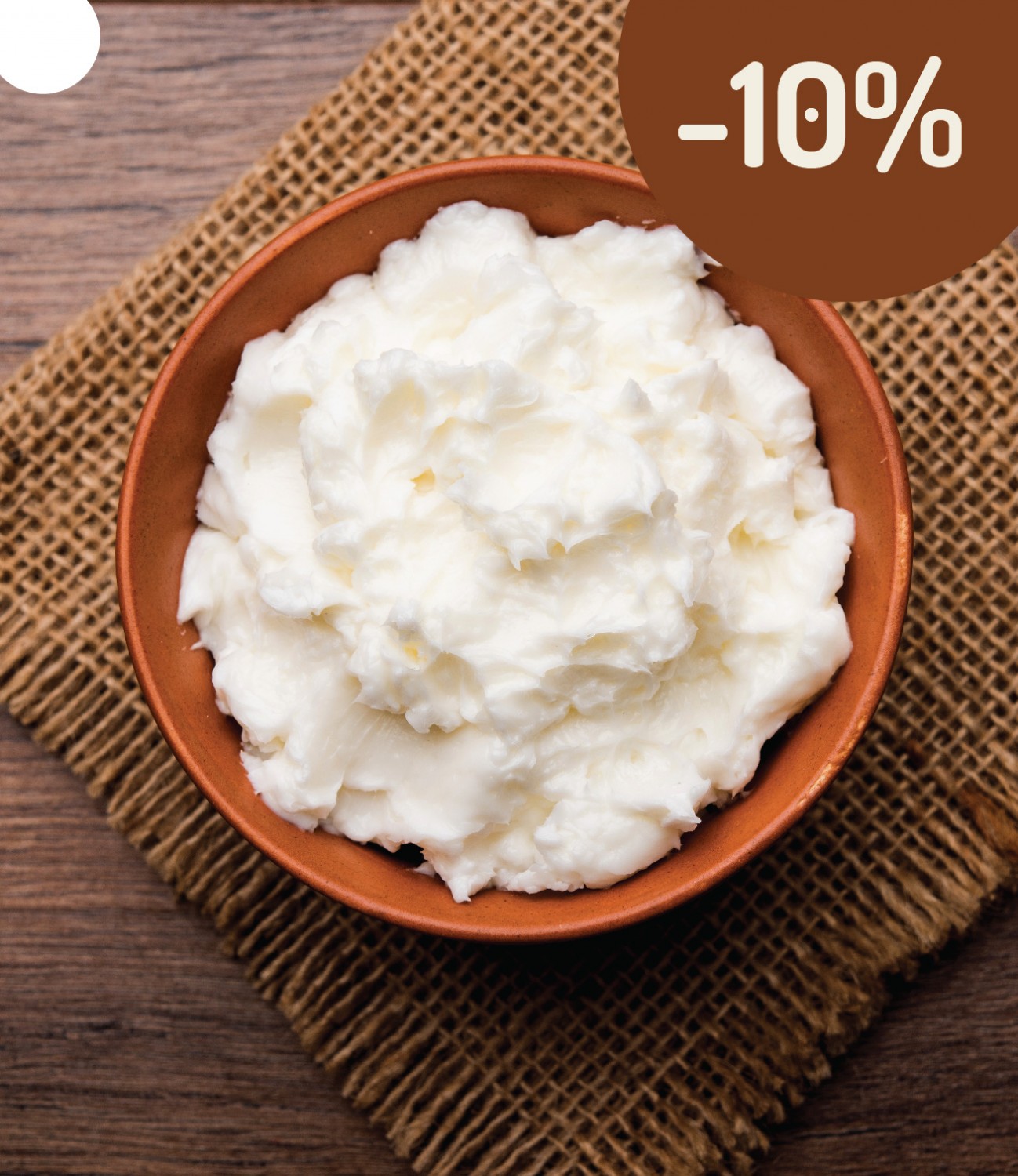Vitamins in cosmetics
In winter, our body requires more than ever a dose of vitamins that are not available in natural form as at other times.
You can also use some vitamins in your beauty products.
These include:
Probably the most well-known health vitamin is vitamin C.
Did you know that vitamin C can also be used in cosmetics? ????
Vitamin C or also L-ascorbic acid is one of the vitamins that humans cannot synthesize in the body and therefore it is necessary to supply it to the body either in its natural form (fruits and vegetables that contain it) or also in the well-known tablet or powder form. In this case, it is nutrition from within. However, vitamin C deficiency also affects our skin, and in the event of a deficiency, it can be supplemented externally in the form of skin nutrition products.
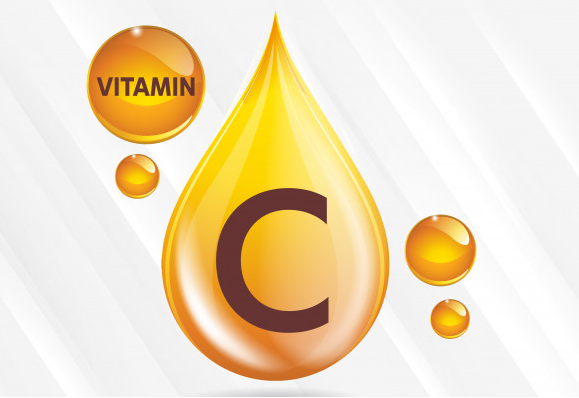

Vitamin C is essential especially in the following layers of the skin:
???? Epidermis - this is the outer and actually the top layer of our skin - this is where the melanocytes are located, which are responsible for the formation of the pigment melanin in our skin.
???? Dermis - this is the deeper layer of the skin found below the epidermis - this is where the fibroblasts are found, which are responsible for the production of collagen.
What can cause a loss or reduction of vitamin C in these layers of the skin?
➡️ Ageing is a process that none of us can avoid, but it is also up to us whether we accelerate the process or not.we can accelerate this ageing process by adopting the right lifestyle and a more responsible way of living.
➡️ Overexposure to UV rays - much has been written about overexposure to UV rays and its ills. If you don't want to deny yourself the touch of the sun's hot rays and a bronzed look in the summer, at least enough UV protection is important.
➡️ Excessive exposure to pollutants, which include mainly cigarette smoke and ozone.
So how does vitamin C work in the skin?
???? As an antioxidant
Free radicals can damage various vital molecules in the body such as proteins, lipids and nucleic acids (such as DNA and RNA). They can enter the skin just through the skin being disturbed by toxins and pollutants, but also when the skin is overexposed to UV rays, where they are also damaged. But they are also produced through our internal metabolism, especially with increasing age, when their production increases while natural defence mechanisms lose their strength.
Antioxidants scavenge these free radicals. Vitamin C acts in this way in the body in two ways:
- it scavenges free radicals by supplying the body with electrons that destroy them
- it maintains levels of alpha tocopherol (vitamin E), which acts specifically against free radicals
???? As a collagen support
Collagen is the protein in our body responsible for beautiful, fresh, elastic and soft skin. Its production decreases with age and the result is mainly less elastic skin and wrinkles - probably the most common manifestation of aging skin.
Vitamin C helps to keep collagen molecules "together", which in practice translates into rejuvenated, fresher skin.
???? As protection
AlthoughVitamin C cannot be used as a sunscreen, it can help limit damage to your skin from ultraviolet light thanks to the properties mentioned above.
Even the most effective combination for such damaged skin areas is a mixture of vitamin C and E.
???? As a means of depigmentation
As we mentioned in the introduction, pigment melanin is formed in the epidermis, which causes skin discoloration. This manifests itself in the desired state after the tanning process in the form of beautiful bronzed skin. With age, however, so-called age spots are formed on our body, but skin degeneration also manifests itself at a younger age in the form of various pigment spots.
It is the topically applied vitamin C that has the cosmetic effect of making the spots disappear and the skin brighter. Thus, it naturally affects the disappearance of hyperpigmented areas, but does not interfere where the skin is normally pigmented (as skin whitening agents would).
How to use/add it to our cosmetic products in practice?
In nature, vitamin C is found only in fruits and vegetables. Cutting up a lemon or red pepper into a cream is probably not the most appropriate form, right? ;-)
In cosmetics, unfortunately, there is no 100% natural form.
???? The most commonly used in formulations is L-ascorbic acid (LAA), which is a chemically and synthetically active form of vitamin C.
In nature, vitamin C occurs in the same proportions as LAA. Both substances have the same molecular formula but have a different chemical structure (for example, the atoms are bonded differently to each other).
L-ascorbic acid is the most potent form of vitamin C on the market that you can use in your products (it is water soluble). However, caution should be exercised when using it at home (professionals have it in their formulationstreated), as it is very unstable as such and its incorrect use could cause you more problems than benefits. It is therefore necessary to use this formula in combination with vitamin E, which keeps the stability within the norm.
???? There are also other forms of vitamin C on the market - the so called. vitamin C derivatives - these are actually added compounds that help prevent vitamin C from degrading and are not harmful tothey are not pH-dependent, which is basically their main advantage, because they are less effective nutritionally than L-ascorbic acid on its own. You can find them in various forms, for example ascorbyl palmitate or magnesium ascorbyl palmitate.
In our offer you can find pure vitamin C (or L-ascorbic acid) in powder form.
Vitamin E
Speaking of vitamins in cosmetics, we certainly can't leave out vitamin E ????
This liquid miracle has earned the nickname "skin vitamin" - of all the vitamins, it is the most well-known and used for maintaining skin health and boosting immunity.
We often mistakenly believe that it is one particular vitamin, but it is actually made up of a group of several fat-soluble antioxidant vitamins called tocopherols (for reference: naturally occurring vitamin E exists in up to eight chemical forms, namely alpha-, beta-, gamma- and delta-tocopherol and alpha-, beta-, gamma- and delta-tocotrienol, all of whichmost commercially available vitamin E is not made up of a mixture of all these forms).
In our offer you can find three types, namely:
???? 70% tocopherol,
???? 9 6% tocopherol,
???? tocopheryl acetate
blended with soybean oil, which is the most standard form of liquid vitamin E blend.
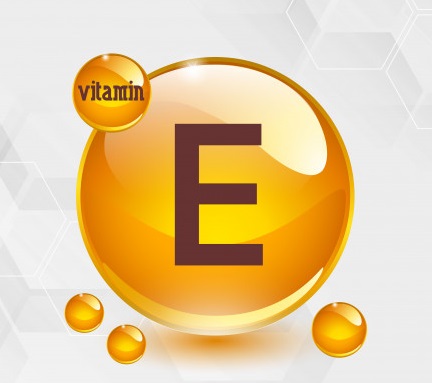
Since it is contained in its natural form in quite a number of foods from which carrier oils can be made, it is possible to vitamin E can also be added to your products in this form (as the recommended dosage of concentrated vitamin E is between 0.2% and 3%).
For example, almond, apricot, olive, babassu, flaxseed, wheat germ, and poppy seed oils contain a fair amount of vitamin E.
Just as vitamin C is effective against free radicals, vitamin E is also effective, but its greatestits greatest effect has been shown in the construction and regeneration of skin and hair (it has an excellent ability to heal scars, burns and wounds). And as the main fat-soluble antioxidant in the human body, vitamin E is known to nourish the skin and boost immunity.
So where and how to use vitamin E?
???? Topically as a drug it is used for nutrition. Its strong ability to hydrate and nourish will help you especially to soothe sensitive and disturbed skin, which is mostly dry skin affected by itching, peeling, inflammation, blistering or various degenerative skin conditions such as dermatitis, mild psoriasis and eczema. Thanks to vitamin E, you can avoid taking aggressive prescription medications to treat various skin conditions. Its effects have also been noted in sunburn or better wound healing and reduced scarring.
in cosmetic products, vitamin E's strong moisturizing ability is used (with regular use) to workto prevent (or at least minimise) the formation of wrinkles or sagging of the skin, thus promoting a youthful and radiant appearance of your skin. It works best at night, so it's ideal to apply it in a night cream or if you don't have a vitamin E cream available, simply drip 2-3 drops into the mixture you apply to your skin and that's it :-)
Taking care of dry skin applies not only to the face, but also to the whole body. Full body rinses are a great option or you can use the vitamin in a bath.
As well as the skin, vitamin E also works on the hair and scalp. It increases circulation to the scalp, which improves hair strength and overall hair health, making your hair worthyit can also help you in this respect if you have experienced more severe hair loss. Again, just drizzle 2-3 drops of vitamin E into the shampoo and apply. Your hair will reward you over time (usually a month to three months) with a healthier appearance. If you want to give your hair even more nourishment, use a vitamin E hair mask once or twice a week.
(Vitamin E is also a very good ingredient in natural makeup removers. We will cover this topic separately.)
???? when massaged, it can relieve beautifully, increasing energy and muscle stamina. It has also found application in sports massage, as it promotes the so-called repair of muscles that have been damaged or disrupted by unreasonably strenuous exercise.
in the production of natural cosmetics, it acts as an antioxidant and prolongs the shelf life of oils.
Please note that for any product containing water, a complex preservative is needed for preservation - we covered this topic in December, read more in our article Preservatives in Cosmetics.
If vitamin E hasn't appealed to you yet, we hope that after reading this article you won't hesitate to find a place for this little helper on your cosmetic shelf ;-) And as you can see in the picture, not only on your cosmetic shelf, dear ladies :-)
B vitamins
Just like vitamin E, which is a group of eight so-called tocopherols found in nature, vitamin B is also made up of a group of eight so-called tocopherols. a group of several B vitamins - B1, B2, B3, B5, B6, B7, B9 and B12, which work as a complex but can also be used individually.
For cosmetic purposes, vitamins B3 and B6 are most commonly used.
Vitamin B3
Vitamin B3, which occurs in the form of niacinamide or nicotinic acid, has very similar effects on the skin to vitamin C. It renews the skin, reduces hyperpigmentation, improves the appearance of the skin, whether it is weakened by the aging process or damaged or reddened and sensitive due to various skin diseases such as acne, mild psoriasis or dermatitis. Niacinamide can also alleviate and to some extent help visibly repair ultraviolet light damage, as well as eliminate the negative effects of various types of air pollutants.
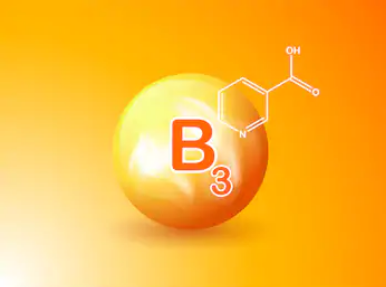

The great benefit of this vitamin compared to other beneficial and nutritive additives (not just vitamins) is its stability (physical and chemical) to the effects of heat and light.
Remark: if you remember, in the post about vitamin C we mentioned that as 100% L-ascorbic acid it is very beneficial for the skin, perhaps the most of allof all vitamins used in cosmetics, but its stability is "fluctuating" due to external factors, so it is stabilized by the addition of vitamin E. In contrast, vitamin B3 does not need such support.
Is it safe to use both vitamins in one formulation?
In the past, scientific research has indicated some concern about the combined use of vitamin C and B3 in formulations. They were concerned about the very elevated pH - due to L-ascorbic acid, B3 converts to nicotinic acid, which significantly raises the pH in the formulation and can cause reddening of the skin. This is a true fact, but fortunately it only occurs under conditions where the formulation would be exposed to too much heat, even for a long period of time.
Thus, there is nothing to worry about if you find a beauty product or formulation that features a combination of vitamin C and vitamin B3, as they enhance their positive effects under ideal conditions ????
Vitamin B6, also called pyridoxine HCl (pyridoxine hydrochloride - it's the hydrochloride salt of vitamin B6), has been given a catchy nickname in medical practice, "the vitamin for the nerves", which clearly sayswhat this form of B vitamins is most important for - metabolism, functional metabolism, proper function of the nervous system and immunity, or as an aid to exhaustion and fatigue.
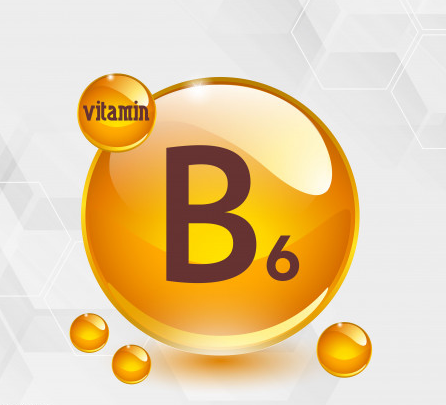

In terms of physical and chemical properties, vitamin B6 is water-soluble and, like the aforementioned vitamin B3 (niacin)n amide) is stable in both light and oxygen and is recommended to be added to formulations at temperatures below 40 ̊C (0.05% to 0.3% is used).
Although all BECs belong to one complex, the effects of individual forms vary. Like vitamin B3, it has similar effects to vitamin C and essentially complements it in its potency inin skin vitality, elasticity and reduction of hyperpigmentation, vitamin B6 has its main function in the regulation of sebum:
???? balances sebum levels
???? reduces excessive oiliness
In hair products, it performs the following functions:
???? promotes healthy-looking hair
???? enhances the effect of anti-dandruff products
So you can use it by adding it to both hair products and cleaning products (baths, soaps, shower gels).
Here is a brief overview of the effects of other forms of B vitamins:
☘️ B5, also called panthenol, has excellent moisturizing and anti-inflammatory effects on the skin, soothes it and helps to heal minor injuries and skin defects. It also hydrates the hair and scalp and provides moisture.
☘️ B7, also called biotin, has also proven itself in the form of nutritional tablets, but also in cosmetic applications.it improves the quality of keratin structures (excellent for fine and fragile hair).
☘️ B9, or also folic acid, generally has the greatest effect in the care of ageing skin, it is important in the formation and repair of DNA.
The last two vitamins mentioned are sensitive to oxygen and lose stability under its influence, so it is recommended to store products containing them in airless bottles. Of course, you can't go wrong if you use airless bottles for serums with any vitamins ????
Vitamin A
We close the topic of vitamins with the last of our offer, vitamin A.
Vitamin A is produced in the human body by supplementing beta-carotene - provitamin A, which in the body serves either as a yellow-red dye or as a so-called "vitamin A". a precursor of vitamin A (a starting substance, the conversion of which produces the final substance) - one molecule of betacarotene produces two molecules of vitamin A.
Beta-carotene mainly functions as an antioxidant in the human body and also plays an important role in eye health, bone growth and immunity. When it is deficient, the body's overall immunity is reduced.
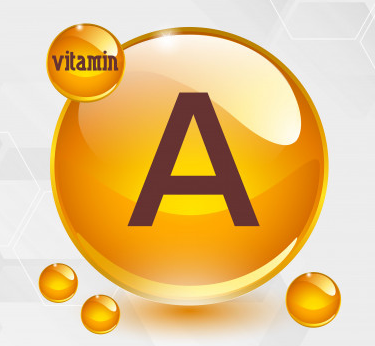

????????️♀️Zaujímavosťou is that betacarotene obtained from animal sources is not soluble it is not water soluble, only fat soluble, and is therefore not easily eliminated from the body, it is stored in body fat and can accumulate and become toxic to the body when consumed in excess.
In contrast, beta-carotene obtained from plant sources is water soluble and therefore easily excreted from the body (toxicity due to overdose is very rare in this case).
How to use betacarotene in cosmetics?
In cosmetics and personal care products, betacarotene is mainly used for preparation:
???? aftershave lotions,
???? bath products,
???? cleansing products,
???? make-up,
???? hair conditioners,
???? shampoos,
???? skin care products and
???? sunscreens.
it ???? It also improves the appearance of dry or damaged skin by reducing flaking and restoring skin elasticity.
In cosmetics, synthetically produced betacarotene or natural is used. Both are water soluble.
Finally, a little more from the glossary, which may help you to find your way around when studying further information:
Vitamin A exists in two forms: retinoids and carotenoids. Both are converted in the body into retinol - an important component for skin cell formation.
Beta-carotene is a provitamin A, and it is classified in the carotenoid group.
Do you use vitamins in your formulations? Which is your favorite?
Article prepared for you by
Martina Oboňová :-)


Any of your comments and suggestions please write to us at marketing@handymade.sk.
Sources:
https://www.newdirectionsaromatics.com/blog/products/all-about-vitamin-e-liquid.html
https://formulabotanica.com/best-form-vitamin-c-in-natural-skincare/https://formulabotanica.com/vitamin-c-high-performance-skincare/
https://www.paulaschoice.com/ingredient-dictionary/skin-soothing/niacinamide.html
https://knowledge.ulprospector.com/9019/pcc-formulating-with-b-vitamins-video/
https://www.allaboutvision.com/nutrition/vitamin_a.htm

